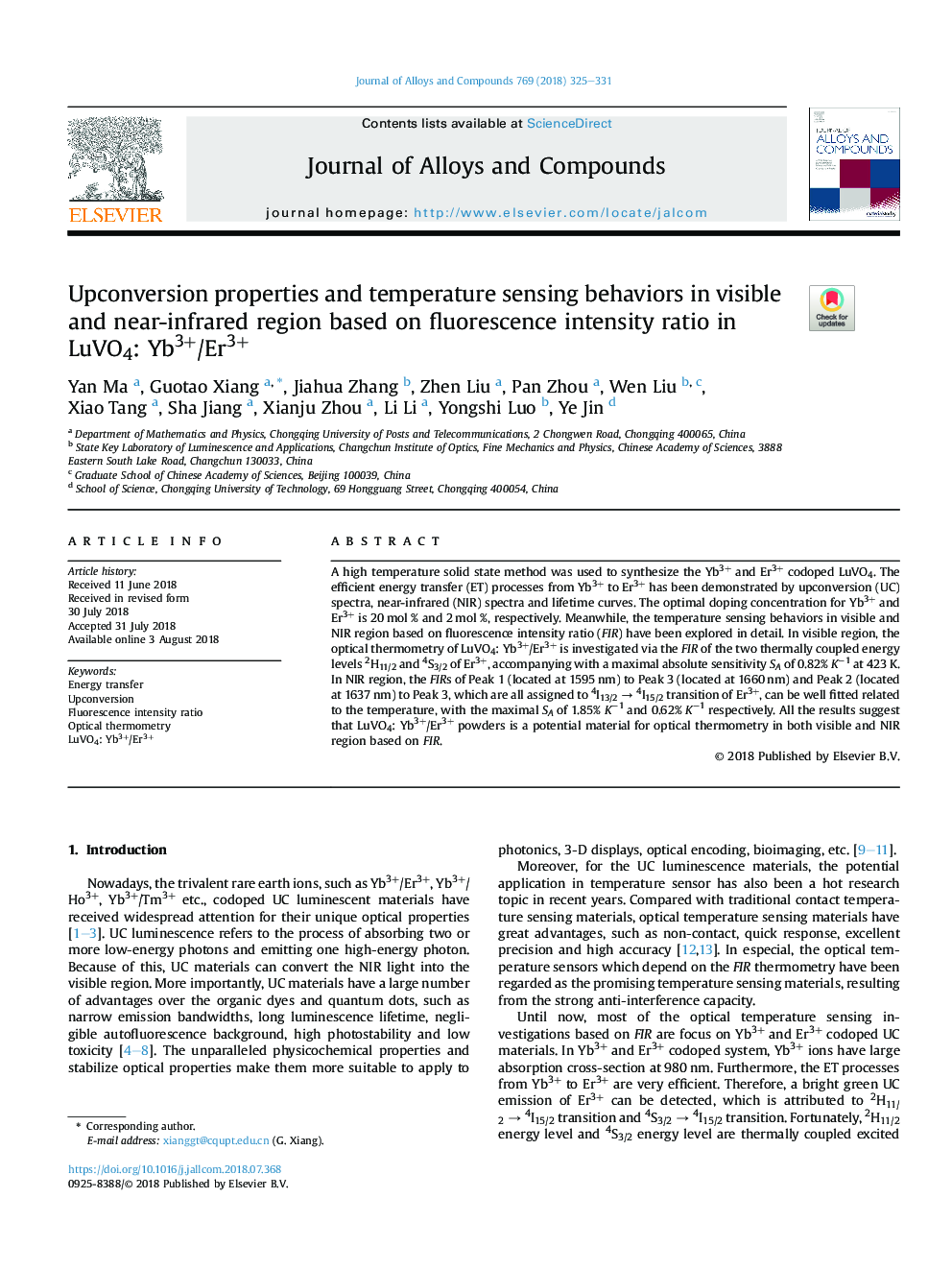| Article ID | Journal | Published Year | Pages | File Type |
|---|---|---|---|---|
| 7990020 | Journal of Alloys and Compounds | 2018 | 7 Pages |
Abstract
A high temperature solid state method was used to synthesize the Yb3+ and Er3+ codoped LuVO4. The efficient energy transfer (ET) processes from Yb3+ to Er3+ has been demonstrated by upconversion (UC) spectra, near-infrared (NIR) spectra and lifetime curves. The optimal doping concentration for Yb3+ and Er3+ is 20â¯mol % and 2â¯mol %, respectively. Meanwhile, the temperature sensing behaviors in visible and NIR region based on fluorescence intensity ratio (FIR) have been explored in detail. In visible region, the optical thermometry of LuVO4: Yb3+/Er3+ is investigated via the FIR of the two thermally coupled energy levels 2H11/2 and 4S3/2 of Er3+, accompanying with a maximal absolute sensitivity SA of 0.82% Kâ1 at 423â¯K. In NIR region, the FIRs of Peak 1 (located at 1595â¯nm) to Peak 3 (located at 1660â¯nm) and Peak 2 (located at 1637â¯nm) to Peak 3, which are all assigned to 4I13/2â¯ââ¯4I15/2 transition of Er3+, can be well fitted related to the temperature, with the maximal SA of 1.85% Kâ1 and 0.62% Kâ1 respectively. All the results suggest that LuVO4: Yb3+/Er3+ powders is a potential material for optical thermometry in both visible and NIR region based on FIR.
Related Topics
Physical Sciences and Engineering
Materials Science
Metals and Alloys
Authors
Yan Ma, Guotao Xiang, Jiahua Zhang, Zhen Liu, Pan Zhou, Wen Liu, Xiao Tang, Sha Jiang, Xianju Zhou, Li Li, Yongshi Luo, Ye Jin,
